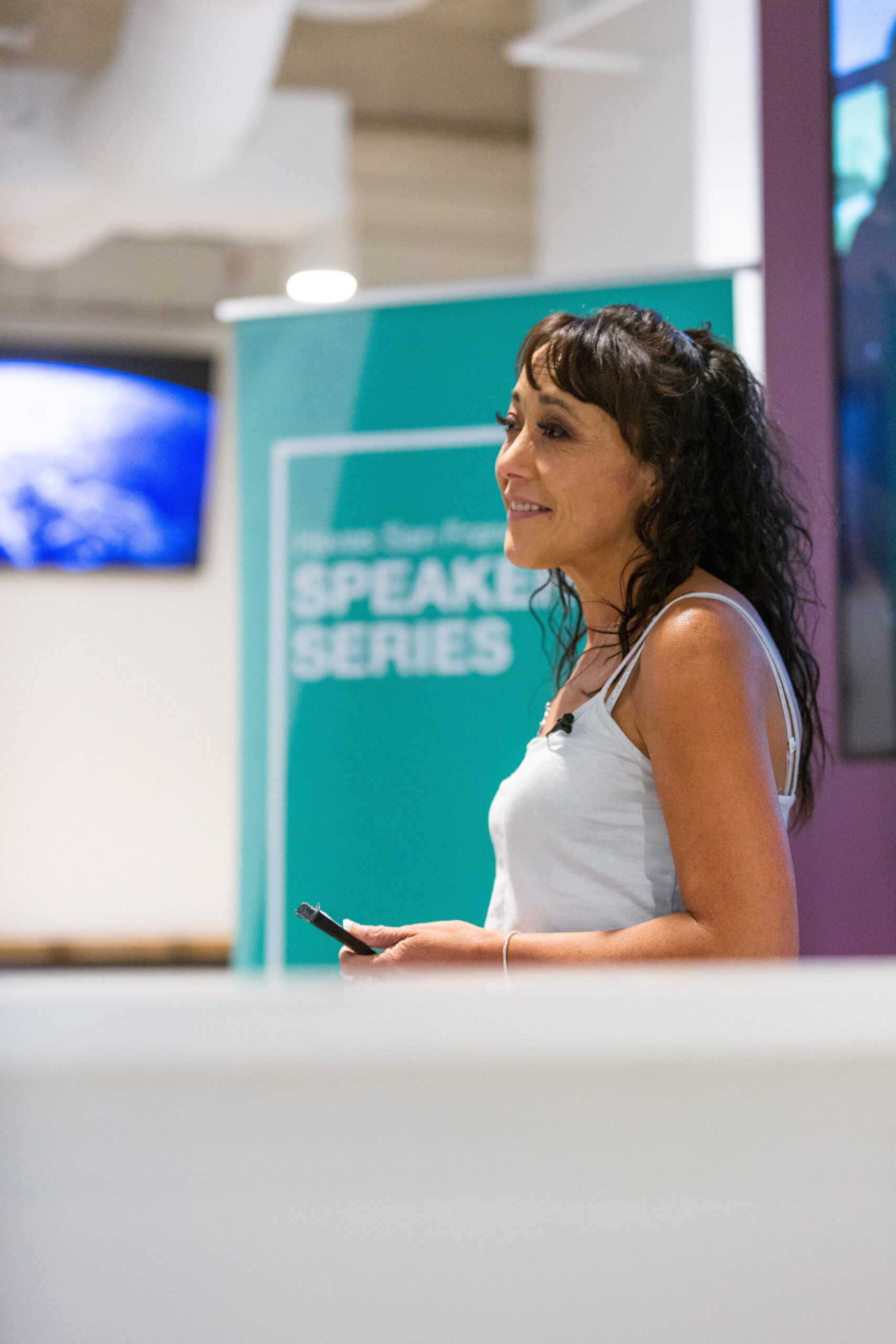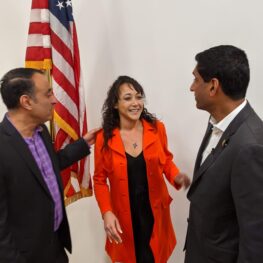Global Genes’ annual RARE Patient Advocacy Summit looked a little bit different this year. Instead of having a blue carpet, you showed off your swag though our virtual photo booth. In place of a networking happy hour, hundreds of attendees from all around the world were able to connect in our Slack channel, and this year’s musical performances were viewed on a screen instead of in-person. However, the connecting thread throughout this year’s virtual Global Genes LIVE! event and our traditional Summit meeting lives with you: the rare community.
From the incredible outpour of online support this year, one story stood out to us as a true testament to the feeling of family and connection that is so prevalent in the rare community, even virtually. On the second day of Global Genes LIVE! Christine Von Raesfeld took to Instagram and shared a photo of her standing in front of a mural in blue and gold lettering reading: #GG2020 Care About Rare.
When we asked her about this creative and unique way of showing support, Christine said she thought nothing of the gesture, “I just wanted to find a way to bring people together even though we weren’t in person.”
Waking Up
Connecting with other rare disease advocates has been a huge part of Christine’s life and journey in rare disease. “I want to be like you when I grow up” she said to teen RARE Champion of Hope Awardee Kavi Gandhi at the 2018 Global Genes RARE Patient Advocacy Summit.
Christine began “growing up” and into her role as a rare disease advocate much later in her life. Though she experienced chronic illness beginning at the age of 5, it wasn’t until a year of psychosis in her late thirties, after Christine became diagnosed with toxic encephalopathy and CNS lupus, that her advocacy career really began. She remembers “posting some crazy things on Facebook- my friends were really worried about me and I don’t remember any of it,” until one day, things changed.
[su_quote]Something snapped – and my first priority became finding support and getting connected, because the rare disease community can be so lonely sometimes.
-Christine Von Raesfeld [/su_quote]
As Christine began searching for a diagnosis, fighting for a cure, and advocating for the patient voice, she quickly found that many decisions surrounding drug development and treatment were failing to take the patient’s voice into consideration when discussing patient centered issues.
Christine recounts a rare disease and orphan drug symposium where she was invited to sit in to offer her perspective as a patient. “It was a very different environment, and one that I was not used to. I looked around for the other patients, hoping they would take the lead in the conversation, but no one did. When I asked where all the other patients were, someone looked at me and said “you’re the only one.”

Connecting and Advocating
This simple encounter lit a fire in Christine. What began as a search for connection and emotional support from the rare disease community evolved into her relentless advocacy efforts for the patient voice. Christine says “as much as I struggle with imposter syndrome sometimes, I realize my experiences can be turned into incredible opportunities. The things that have happened to me will continue to happen to others unless we speak up. And now that I have become a respected voice in this industry, I’m able to advocate and help to bring about the change we need.”
Christine now sits on the advisory boards of several organizations like More than Lupus and Health Advocacy Summit, while also speaking and contributing to DBSA California, an organization that encourages and support people struggling with mental health and depression. The contacts and partnerships she has developed have allowed Christine to “finagle” her way into conferences and meetings, where she has found amazing friends who truly want to help. “They gave me opportunities that no one else would, and I’ve been able to build a network of people that actually care. It’s a side of industry I never thought I’d see.”
 Eventually, Christine used her connections to form her own nonprofit, People With Empathy, which is geared towards breaking down silos in healthcare and reimagining the ways patients can share innovating groundbreaking therapies and technologies. They’re bringing together a team with perspectives from multiple disciplines in health care, health research, health technology, patient and caregiver communities to improve the quality of life of patients and care partners.
Eventually, Christine used her connections to form her own nonprofit, People With Empathy, which is geared towards breaking down silos in healthcare and reimagining the ways patients can share innovating groundbreaking therapies and technologies. They’re bringing together a team with perspectives from multiple disciplines in health care, health research, health technology, patient and caregiver communities to improve the quality of life of patients and care partners.
Paving the Way
Christine says that People With Empathy is meant to use people’s negative experiences with healthcare to drive change and foster connection. She emphasizes that “it’s not about one disease. It’s about connecting with people on our shared experiences with rare disease as a whole.” While these experiences are not always positive, Christine upholds that through sharing our stories, we begin to pave the road for rare disease patients and advocates that follow in our footsteps.
Through facing her imposter syndrome and forging strong, growing partnerships with all different kinds of rare disease stakeholders, Christine’s long line of achievements now include a RARE Champion of Hope nomination in advocacy. She believes that through collective intelligence and collaborative leadership, we can come up with cost-effective and viable solutions that will benefit the rare community around the world. Christine drives home an empowering message that through including the voices of all stakeholders and leveraging connections, we can truly make a difference for the future of rare disease research and recognition.

Stay Connected
Sign up for updates straight to your inbox.

